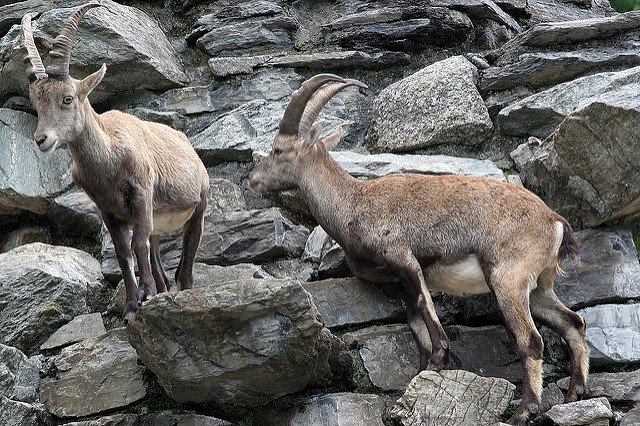Do you believe in the occult intellectual power of goats? An American journalist, born in the 1830s, William Wirt Sikes did. Or at least he believed it was necessary to record this belief along with other fascinating “old ways” of the Welsh people as he traveled there as consulate, and never left.
Many of us have an immediate association with goats and Baphomet or another horned god, seen cavorting with witches at the sabbat, and dancing around the bonfire at all hours of the night. (Yes, please). But Sikes is talking about a more specific relationship: that of goats with the Gwyllion: female fairies with “frightful characteristics, who haunt lonely roads in the Welsh mountains, and lead night-wanderers astray.” These wild goblin women (which remind me a bit of the banshee) lurk and loom in craggy mountains and behind the shadows of boulders. The Welsh word “gwyll” Sikes tells us, is used “to signify gloom, shade, duskiness, a hag, a witch, a fairy, and a goblin.” In this excerpt from his greater work, British Goblins, we learn the story of a goat who did not transform into a man but rather a beautiful maiden who seeks to avenge a man’s anger.
Sikes writes:
Among the traditions of the origin of the Gwyllion is one which associates them with goats. Goats are in Wales held in peculiar esteem for their supposed occult intellectual powers. They are believed to be on very good terms with the Tylwyth Teg [the common Welsh name for all fairies. V.V.] and possessed of more knowledge than their appearance indicates. It is one of the peculiarities of the Tylwyth Teg that every Friday night they comb the goats’ beards to make them decent for Sunday. Their association with the Gwyllion is related in the legend of Cadwaladr’s goat: Cadwaladr owned a very handsome goat, named Jenny, of which he was extremely fond; and which seemed equally fond of him; but one day, as if the very devil possessed her, she ran away into the hills, with Cadwaladr tearing after her, half mad with anger and affright. At last his Welsh blood got so hot, as the goat eluded him again and again, that he flung a stone at her, which knocked her over a precipice, and she fell bleating to her doom. Cadwaladr made his way to the foot of the crag; the goat was dying, but not dead, and licked his hand—which so affected the poor man that he burst into tears, and sitting on the ground took the goat’s head on his arm. The moon rose, and still he sat there. Presently he found that the goat had become transformed to a beautiful young woman, whose brown eyes, as her head lay on his arm, looked into his in a very disturbing way. ‘Ah, Cadwaladr,’ said she, ‘have I at last found you?’ Now Cadwaladr had a wife at home, and was much discomfited by this singular circumstance; but when the goat—now a maiden—arose, and putting her black slipper on the end of a moonbeam, held out her hand to him, he put his hand in hers and went with her. As for the hand, though it looked so fair, it felt just like a hoof. They were soon on the top of the highest mountain in Wales, and surrounded by a vapoury company of goats with shadowy horns. These raised a most unearthly bleating about his ears. One, which seemed to be the king, had a voice that sounded above the din as the castle bells of Carmarthen used to do long ago above all the other bells in the town. This one rushed at Cadwaladr and butting him in the stomach sent him toppling over a crag as he had sent his poor nannygoat. When he came to himself, after his fall, the morning sun was shining on him and the birds were singing over his head. But he saw no more of either his goat or the fairy she had turned into, from that time to his death.
Learn more strange tales and exciting folklore in my new book, Fairies, Pookas, and Changelings: A Complete Guide to the Wild and Wicked Enchanted Realm. Pre order it by clicking the links below:
Amazon
Barnes & Noble
Indiebound
photo of goats: Shawn Clover via flickr creative commons

